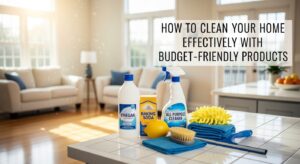Load shedding, the planned or sometimes unplanned interruption of electricity supply, has been a consistent challenge for homes and businesses across Pakistan for many years. While efforts are continuously being made to improve the power sector, it remains a part of our daily reality that we often have to navigate. But don’t let load shedding be a source of constant frustration. With a bit of strategic planning and the right solutions, you can significantly minimize its impact and even seamlessly integrate it into your routine.
This guide is designed to be your comprehensive, one-stop resource to mastering the art of dealing with load shedding in Pakistan in 2025. We will cover everything from understanding the schedules to investing in smart solutions, all accompanied by practical, localized advice.
Understanding Load Shedding in Pakistan
Before diving into the solutions, it’s helpful to quickly grasp why load shedding occurs and how you can stay informed.
What is Load Shedding and Why Does it Happen?
Load shedding is essentially a controlled method of distributing electricity when the demand for power exceeds the available supply. When this imbalance occurs, power distribution companies (often referred to as DISCOs across Pakistan, such as IESCO, LESCO, FESCO, MEPCO, HESCO, SEPCO, QESCO, PESCO, and K-Electric in Karachi) temporarily cut off electricity to specific areas. This preventative measure is crucial to avoid a complete collapse of the national power grid, which would result in much larger and prolonged blackouts.
The underlying reasons for this demand-supply gap are multifaceted. They include an aging power infrastructure, insufficient capacity for power generation, significant transmission and distribution losses, and the ongoing issue of circular debt within the energy sector. Seasonal factors also play a critical role, with electricity demand soaring dramatically during the hot summer months due to the widespread use of air conditioners and fans.
How to Stay Informed About Load Shedding Schedules
Knowing precisely when the power will go out is the most fundamental and critical step in managing load shedding effectively.
- Official Websites: Every DISCO, like IESCO, LESCO, or K-Electric, maintains an official website where they publish daily or weekly schedules. Look for sections clearly labeled “Load Management Schedule” or “Power Outage Schedule.”
- Mobile Applications: A growing number of DISCOs now offer dedicated mobile applications compatible with both Android and iOS devices. These apps frequently provide real-time updates and, in many cases, can offer personalized schedules if you register your consumer number within the application.
- SMS Alerts: Some power utility companies offer an SMS alert service. By registering your mobile number, you can receive timely notifications directly to your phone regarding planned outages affecting your specific vicinity.
- Local News Channels and Social Media: Local news broadcasts and community-based social media groups often share updated schedules. However, it’s always wise to exercise caution and cross-verify information obtained from unofficial sources.
- Calling Customer Service: While less convenient for routine checks, you always have the option to call your local power utility’s customer service helpline to inquire about the current load shedding schedule.
Practical Tip: It’s highly recommended to bookmark your specific DISCO’s official load shedding webpage or download their dedicated mobile app. Make it a routine to check the schedule first thing in the morning or the night before to prepare adequately for the upcoming day. Be aware that schedules can occasionally change due to unforeseen technical faults or operational adjustments, so maintaining a degree of flexibility is always beneficial.
Essential Preparations for Your Home
Being well-prepared for power outages means having certain key items and systems in place within your home. These preparations will significantly smooth out your experience when the electricity goes out.
Lighting Solutions: Seeing Through the Dark
When the power is off, having reliable lighting is paramount for both safety and comfort.
| Item | Details & Safety Tips |
|---|---|
| Rechargeable LED Lights | Charge automatically when power is on and switch on during outages. Choose models with long battery life. Place in high-traffic areas like living rooms, bedrooms, and bathrooms for maximum convenience. |
| Solar-Powered Lights | Ideal for gardens, outdoor spaces, or indoor pathways. Charge during the day using sunlight and provide illumination at night. Eco-friendly and low-maintenance. |
| Battery-Operated Lamps & Torches | Keep multiple torches or lamps in different areas of your home. Maintain a supply of spare batteries or invest in rechargeable batteries with a charger for cost efficiency. |
| Candles (Use with Caution) | Traditional but risky due to fire hazards. Use sturdy, non-flammable holders, keep away from flammable materials, and never leave unattended. Extinguish fully before sleeping or leaving the room—especially with children or pets around. |
Common Mistake: Forgetting to regularly charge rechargeable lights or failing to have fresh batteries readily available for torches.
Advice: Develop a habit of plugging in your rechargeable lights immediately after power is restored. Periodically check and replace the batteries in your torches to ensure they are always functional.
Staying Connected: Powering Your Devices
In our increasingly connected world, maintaining communication is vital for work, social interaction, and emergencies.
| Item | Details & Usage Tips |
|---|---|
| Power Banks | Invest in a high-capacity power bank for charging smartphones and tablets. Always keep it fully charged so it’s ready when needed. |
| UPS/Inverter Batteries | If you own a UPS or inverter, maintain the batteries regularly and keep them fully charged to ensure seamless power supply during outages. |
| Laptop Battery Management | Before scheduled outages, fully charge your laptop. During the cut, enable power-saving mode and close unnecessary apps to extend battery life. |
| Car Chargers | Useful for charging phones during extended outages if you own a car. Keep one stored in your vehicle for emergencies. |
| Portable Solar Chargers | Compact and effective for topping up phone batteries during daytime outages. Works best in direct sunlight. |
Real-World Tip: Prioritize your charging. Always charge your mobile phone first, then laptops, and then any other non-essential devices.
Food and Water: Keeping Essentials Safe
Load shedding can directly impact the functionality of your refrigeration and, in many areas, your water supply.
| Item | Details & Usage Tips |
|---|---|
| Refrigerator and Freezer Management | Keep doors closed to preserve cold air. A full freezer retains cold longer—fill gaps with crumpled newspaper or ice packs. Use frozen water bottles to help maintain temperature. Prepare meals in advance if you expect a long outage, or cook during powered intervals. |
| Water Storage | Store enough clean, covered drinking water for 24–48 hours, especially if you rely on an electric pump. Consider non-electric water filters for safe drinking water. |
| Cooking Alternatives | Keep a small gas cylinder with a portable stove or gas BBQ for cooking and boiling water. Ideal for tea, quick meals, and emergency food preparation during outages. |
Anticipate: What if the power goes out right during meal preparation or while you’re about to eat?
Advice: Keep instant noodles, ready-to-eat snacks, or items that can be quickly prepared on a gas stove readily accessible.
Safety and Security: Protecting Your Home
Power outages can sometimes compromise the security of your home, especially during periods of darkness.
- Security Lighting: Install solar-powered outdoor lights around your boundary walls and main entrances. These lights are designed to illuminate automatically as dusk sets in.
- Manual Override for Gates and Locks: Ensure you know how to manually open and close your electric gate or garage door. Confirm that all main door locks are robust and fully functional.
- Alarm System Backup: If you have a security alarm system, verify that it has a functioning battery backup and regularly check its operational status.
- Stay Vigilant: Exercise extra caution and awareness of your surroundings during power cuts, particularly when entering or exiting your home at night.
Investing in Backup Power Solutions
For consistent power during load shedding, investing in a reliable backup system is often the most practical and effective long-term solution.
UPS (Uninterruptible Power Supply) and Inverters
These are the most prevalent backup power solutions widely used in homes across Pakistan.
| Step / Component | Details & Recommendations |
|---|---|
| Assess Your Needs | Identify all appliances you want to power (e.g., lights, fans, TV, fridge, Wi-Fi router, water pump). Decide how long you need backup (short outages ~2 hours or extended 8+ hours). |
| Calculate Your Load | Add up wattage of devices you’ll run simultaneously. Example: ceiling fan ≈ 75W, LED light ≈ 10–15W, refrigerator ≈ 150–200W (when compressor runs). Use this to find the right VA (Volt-Ampere) rating. |
| Types of UPS/Inverters | Online UPS – Instant, clean power for sensitive electronics (costly). Offline/Standby UPS – Common, minimal switchover delay. Line-Interactive UPS – Improved voltage regulation over standby. Inverter with External Batteries – Ideal for long backups; needs deep-cycle (tubular) batteries. |
| Battery Selection | Capacity in Ah (Ampere-hours) determines backup time. Higher Ah = longer runtime. Tubular batteries are preferred for durability and heat performance. Match battery size to inverter capacity and load. |
| Professional Installation | Hire a qualified electrician. Incorrect wiring can damage appliances or cause safety hazards. |
| Maintenance | Battery water – Check and top up distilled water in lead-acid batteries regularly. Cleanliness & ventilation – Keep the area dust-free and allow airflow. Load management – Never exceed rated capacity; stick to planned appliances only. |
Common Mistake: Purchasing an undersized UPS or inverter, or opting for cheap, low-quality batteries.
Advice: Invest in quality components. While the upfront cost might be slightly higher for a reputable brand and robust batteries, it will undoubtedly save you money, frustration, and potential hazards in the long run. Well-known brands include APC, Crown, and reliable local options like Inverex.
Generators: For Heavier Loads
If your power requirements include running heavy appliances such as multiple air conditioners, or if you operate a small commercial setup, a generator might be a necessary consideration.
| Factor | Details & Recommendations |
|---|---|
| Fuel Type | Petrol – Affordable upfront, suited for small loads, but fuel cost is high with frequent refills. Diesel – More fuel-efficient for large loads, robust build, higher initial price, noisier. Gas (Natural Gas/LPG) – Convenient with piped gas supply, eco-friendlier, no refueling needed, higher installation cost. |
| Size (KVA) | Calculate total wattage of appliances you need to run (similar to UPS load calculation) and select a generator with the matching KVA rating. |
| Noise & Ventilation | Place generator outdoors in a well-ventilated space, away from living areas. Exhaust fumes are hazardous—never operate indoors. |
| Maintenance | Schedule regular servicing, change oil on time, and keep fuel supply checked for uninterrupted operation. |
| Safety | Ensure proper grounding. Use heavy-duty extension cords rated for the load. Never run indoors due to carbon monoxide risks. |
Real-World Tip: Generators require fuel. Always maintain a safe and adequate supply of the correct fuel type, especially during peak load shedding seasons.
Solar Power Systems: A Sustainable Solution
Solar power is rapidly emerging as a preferred long-term, sustainable, and cost-effective solution to load shedding across Pakistan.
| Factor | Details & Recommendations |
|---|---|
| Types of Solar Systems | On-Grid (Grid-Tied) – Connected to the national grid; use solar directly, export excess via net metering, draw from grid when solar is insufficient. No backup during outages unless hybrid inverter is used. Off-Grid – Independent from grid; uses batteries for storage; full backup but higher cost due to batteries. Hybrid – Combines both; connected to grid with batteries for backup; can export excess power and provide electricity during load shedding. |
| Assessment & Sizing | Professional installer evaluates your energy usage, roof space, and budget. They determine required panel count, inverter capacity, and battery size (if applicable). |
| Key Components | Solar Panels – High-efficiency monocrystalline N-type bifacial recommended (brands: Longi, Jinko, Canadian Solar, Trina Solar). Inverter – Converts DC to AC (hybrid inverters: Inverex, MaxPower, Huawei, Sungrow, GoodWe, Solis). Batteries – Deep-cycle solar batteries for off-grid/hybrid setups. Mounting, Wiring, Safety Devices – All essential for proper function. |
| Net Metering | For on-grid/hybrid systems, allows selling excess electricity back to the grid, reducing bills. Requires DISCO application and NEPRA approval. |
| Professional Installation | Choose experienced, reputable installers with warranties on panels, inverters, and workmanship. |
| Maintenance | Minimal—mainly periodic cleaning of panels for optimal efficiency. |
Consideration: The initial investment for a solar system can be substantial, but the long-term savings on electricity bills and the invaluable benefit of energy independence are significant advantages. It’s worth inquiring with solar companies or local banks about any government incentives or financing options that might be available.
Making Your Home Energy Efficient
Reducing your overall electricity consumption is a smart strategy, whether there’s load shedding or not. It not only lowers your monthly bills but also reduces the strain on any backup power systems you may have.
Switching to Energy-Efficient Appliances
Older appliances can be notorious energy guzzlers.
- Inverter ACs: These are highly recommended, especially given Pakistan’s intense summer heat. Unlike conventional air conditioners that cycle on and off, inverter ACs adjust their compressor speed to match the cooling requirement, leading to significant energy savings. Look for reputable brands like Gree, Dawlance, and Haier.
- LED Lighting: Replace all traditional incandescent bulbs and CFLs (Compact Fluorescent Lamps) with LED lights. LEDs consume a mere fraction of the electricity, generate less heat, and boast a much longer lifespan.
- Energy-Efficient Refrigerators: When purchasing a new refrigerator, prioritize models with higher energy efficiency ratings. Features like frost-free technology and advanced insulation also contribute to lower energy usage. Some newer models are even designed to be more compatible with solar power. Popular local choices include PEL and Dawlance.
- Smart Appliances: Many modern smart appliances now offer energy monitoring features and can often be controlled remotely, giving you greater control over your energy consumption even when you’re away from home.
Practical Tip: Whenever you are purchasing new appliances, always make it a point to check the energy efficiency rating or star rating. A higher rating indicates greater energy savings over the appliance’s lifespan.
Smart Energy Consumption Habits
Even with your current appliances, adopting small, mindful changes in your daily habits can lead to a significant difference in energy consumption.
- Unplug Devices: When electronic devices, chargers, or appliances (like TVs) are not in use, make it a habit to unplug them. They often draw a small amount of “phantom load” even when switched off.
- Turn Off Lights and Fans: This may seem obvious, but it’s frequently overlooked. Always switch off lights and fans when you leave a room.
- Optimize AC Usage: Set your air conditioner to a comfortable but not excessively cold temperature, typically around 26-27°C. Utilize timer functions to automatically switch it off after a certain period. Ensure that your rooms are properly insulated to effectively retain the cooling.
- Water Heater Management: Turn off geysers when they are not actively needed. Consider installing a timer for automatic operation, or for specific needs, use a small, efficient instant water heater.
- Ironing: Try to gather all your clothes and iron them in a single session rather than in small batches. Ideally, do your ironing during periods when electricity is reliably available.
- Washing Machine and Dishwasher: Run these appliances only when you have a full load. If possible, schedule their operation during periods when power supply is typically more stable, such as late at night or early morning if load shedding is minimal.
Anticipate: What if I forget to turn off appliances before an unexpected outage occurs?
Advice: Make it a routine to perform a quick check of essential appliances just before an expected load shedding period. For valuable electronics, consider using surge protectors that automatically cut off power during significant voltage fluctuations upon power restoration, protecting your devices.
Coping with Load Shedding: Daily Life Hacks
Beyond hardware solutions and energy efficiency, there are numerous simple yet effective ways to navigate your daily life more smoothly during power cuts.
Planning Your Day Around the Schedule
This is where diligently knowing the load shedding schedule truly yields benefits.
- Charge Everything: As soon as electricity is restored, make it a priority to plug in and fully charge all your devices—mobile phones, laptops, power banks, rechargeable lights, and ensure your UPS or inverter batteries are charging.
- Essential Chores: Schedule tasks like doing laundry, ironing clothes, pumping water, or running any heavy appliances during the hours when electricity is reliably available.
- Meal Preparation: Plan meals that can be cooked quickly, or prepare components of meals in advance during power hours. Utilize your gas stove for cooking when the power is out.
- Work and Study: Allocate computer-intensive work or study sessions for times when you expect power to be on.
- Family Time: Use power cut times as an opportunity for offline activities like playing board games, reading a book (with a torch!), or simply engaging in conversation and bonding with family members. This can transform a frustrating situation into valuable quality time.
Common Mistake: Postponing essential chores, only to find yourself in the dark when you most need to complete them.
Advice: Create a small, mental, or written checklist for your “power on” tasks and make it a habit to stick to it.
Maintaining Comfort and Well-being
Load shedding can be particularly challenging in Pakistan’s extreme weather conditions, especially during the scorching summer months.
- Summer Heat:
- Frozen Water Bottles: Keep bottles of water in the freezer during power hours. These can provide refreshingly cold drinking water and also help to keep your refrigerator cooler during outages.
- Wet Cloths: Use damp cloths on your face and neck to help cool down.
- Light Clothing: Wear loose-fitting, light-colored clothing made of breathable fabrics.
- Cross-Ventilation: If safe, open windows or doors on opposite sides of your house to create a natural cross-breeze.
- Cool Showers: A cool shower just before an expected long outage can help lower your core body temperature.
- Winter Cold:
- Layer Up: Wear multiple layers of clothing to trap warmth.
- Warm Drinks: Utilize your gas stove or a thermos to prepare hot tea or coffee.
- Warm Blankets and Shawls: Keep warm blankets and shawls readily accessible in living areas.
- Avoid Opening Windows: Keep windows and doors securely closed to retain any accumulated warmth inside.
Real-World Tip: In the summer, if you have a UPS or inverter, prioritize running a few fans in key living areas to maintain air circulation, which can make a significant difference in comfort.
Managing Food and Water Safely
Keeping food fresh and ensuring water accessibility are constant concerns during prolonged power outages.
- Minimal Fridge Opening: As emphasized earlier, open the refrigerator and freezer doors as little as possible to retain cold air.
- Pre-Cooked Meals: Have a few pre-cooked meals or meal components on hand that can be eaten cold or quickly reheated on a gas stove.
- Dry Goods Stock: Maintain a stock of non-perishable food items such as biscuits, rusks, instant noodles, and various canned goods.
- Water Drums/Tanks: If your home has overhead or underground water storage tanks, ensure they are fully filled during periods when power is available.
- Hand Sanitizer: Keep hand sanitizer readily available for situations where running water might be scarce.
Staying Productive and Entertained
Load shedding does not mean your life has to come to a complete standstill.
- Offline Activities: Engage in activities that don’t require electricity, such as reading a physical book, playing board games, listening to music on a charged device, or pursuing hobbies that are independent of power.
- Pre-download Content: Before an anticipated outage, download movies, TV shows, podcasts, or audiobooks onto your devices to enjoy offline.
- Productive Tasks: Use the time for planning, organizing household items, or performing light chores that do not depend on electricity.
- Socialize: Take the opportunity to engage in conversations with family members, visit neighbors, or simply use the time to relax and unwind.
Conclusion
Load shedding in Pakistan is a daily reality for many of us. While it can undoubtedly be frustrating, adopting a proactive and well-prepared approach can significantly alleviate its impact. By staying informed about schedules, making essential home preparations, investing in appropriate backup power solutions like UPS, inverters, or increasingly, solar systems, embracing energy-efficient habits, and developing smart daily routines, you can truly transform your experience and deal with load shedding like a seasoned professional.
Always remember, every small step you take towards greater energy independence and efficiency not only contributes to your personal comfort and convenience but also plays a part in the larger national effort to overcome our energy challenges. Stay informed, remain prepared, and continue to explore innovative ways to keep the lights on, even when the national grid faces its own struggles.
Resources
- Power Distribution Companies (DISCOs) Official Websites:
- IESCO (Islamabad Electric Supply Company)
- LESCO (Lahore Electric Supply Company)
- K-Electric (Karachi Electric)
- FESCO (Faisalabad Electric Supply Company)
- MEPCO (Multan Electric Power Company)
- HESCO (Hyderabad Electric Supply Company)
- SEPCO (Sukkur Electric Power Company)
- QESCO (Quetta Electric Supply Company)
- PESCO (Peshawar Electric Supply Company)
- National Electric Power Regulatory Authority (NEPRA): For official consumer complaints and regulatory information regarding electricity services.
- Reputable UPS/Inverter Brands commonly found in Pakistan: APC, Crown, Inverex, MaxPower, Homage.
- Leading Solar Panel Brands widely available: Longi Solar, Jinko Solar, Canadian Solar, Trina Solar.
- Recommended Solar Inverter Brands for residential use: Inverex, MaxPower, Huawei, Sungrow, GoodWe, Solis, Knox.
- Energy-Efficient Appliance Brands with strong presence: Gree, Dawlance, Haier, PEL, Orient (for products like inverter ACs and refrigerators).







